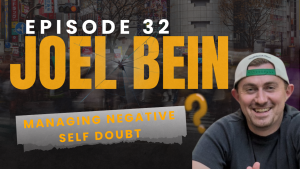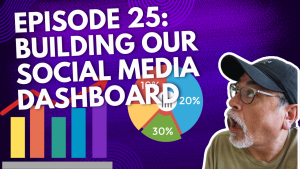Leaders today face a paradox: visibility is a strategic necessity, yet excessive hype undermines trust. The solution lies in applying authentic leadership principles deliberately within a personal branding strategy that scales without sacrificing credibility. This approach, grounded in peer-reviewed research, offers practical insights leaders can immediately use across digital profiles, executive communications, and stakeholder interactions. By translating validated constructs of authentic leadership into repeatable branding choices, leaders can strengthen credibility, build lasting influence, and ensure their visibility enhances rather than erodes trust. (Walumbwa et al., 2008; Gardner et al., 2011; Banks et al., 2016; Labrecque et al., 2011; McCroskey & Teven, 1999).

Why Authentic Leadership Is The Only Scalable Foundation
Authenticity in leadership is not just a matter of style; it is a well-studied concept that can be measured. The most common tool, the Authentic Leadership Questionnaire, looks at four parts: self-awareness, moral perspective, balanced decision-making, and openness in relationships. These parts fit together into a larger pattern and consistently link to positive results in studies from the United States, China, and Kenya, showing the idea holds across cultures. Leaders who build their personal brand around these areas avoid choices that hurt their credibility, because their brand reflects steady inner values and clear, visible actions (Walumbwa et al., 2008).
A comprehensive review by Garder et al. (2011) clarifies why this matters at scale. Authentic leaders are more likely to foster trust, identification, and follower development because they share information openly, process dissenting views fairly, and act consistently with stated values. These mechanisms reduce the gap between what leaders say and what stakeholders experience, a gap that destroys leadership credibility in high-visibility environments. In other words, authentic leadership supplies the behavioral substrate that personal branding simply amplifies.
The Outcome Case For Authenticity Over Optics
When leaders expand their reach, the temptation is to optimize for attention. The research record suggests optimizing for authenticity is more effective. A meta-analytic comparison of authentic and transformational leadership using 100 independent samples and 25,452 participants shows authentic leadership is uniquely associated with important outcomes even after accounting for overlaps with other positive leadership styles. The analysis indicates authentic leadership predicts satisfaction, commitment, and performance, and the construct is not redundant with transformational leadership. That means leaders gain incremental value by cultivating authenticity specifically rather than relying on generic inspirational messaging (Banks et al., 2016).
These effects translate into personal branding implications. Commitment and satisfaction are precursors to stakeholder advocacy, while performance credibility underpins investor and partner confidence. Leaders who systematize authentic behaviors into their personal branding strategy improve the probability that visibility converts into trust rather than skepticism. Evidence that authentic leadership has predictive validity across cultures further supports scaling authenticity globally (Walumbwa et al., 2008; Gardner et al., 2011; Banks et al., 2016).
A Research-Grounded Architecture For Personal Branding Strategy
The peer-reviewed literature on online personal branding maps a process that leaders can adapt. Labrecque et al. (2011) outline how individuals define their value proposition, curate signals across platforms, and manage audience perceptions over time. Their work emphasizes message consistency, content-platform fit, and the need to monitor and adjust based on audience feedback. Translating this into executive practice, a personal branding strategy should formalize positioning (who you are), proof (how you show it), and protocols (how you operate across owned and social channels). This architecture aligns tightly with authentic leadership because it codifies behaviors and disclosures that are true to the leader’s values while meeting audience expectations for clarity and coherence.
Importantly, Labrecque et al. distinguish between identity claims (what you say) and identity confirmations (what others say about you). Leaders who rely only on self-descriptions invite credibility gaps; leaders who seed verifiable evidence and encourage credible third-party confirmations create reputational flywheels. This reinforces the authentic leadership emphasis on relational transparency and balanced processing, where dialogue and independent validation matter as much as self-statement.

Credibility Is Measurable And Manageable
Leadership credibility has three core dimensions: competence, trustworthiness, and goodwill. While competence and trustworthiness are widely discussed, goodwill is often neglected. McCroskey and Teven (1999) revalidated goodwill as a distinct, measurable construct in source credibility. Goodwill captures whether the audience believes a communicator has their interests at heart, independent of expertise. For leaders building a scaled personal brand, goodwill is not a soft add-on; it is a statistically separable driver of persuasion and acceptance.
This has immediate design implications for personal branding strategy. Leaders should audit their communications and profiles for cues of benevolence, not just competence signaling. Examples include responding to dissent respectfully, acknowledging trade-offs, crediting teams, and offering practical resources without gatekeeping. Each of these behaviors signals goodwill and increases leadership credibility, particularly in online contexts where audiences infer intent from micro-behaviors. Integrating these cues systematically satisfies authentic leadership’s relational transparency facet while strengthening credibility across all stakeholder segments (McCroskey & Teven, 1999; Walumbwa et al., 2008).
Operationalizing Authentic Leadership In Digital Communications
1) Self-Awareness – Positioning Statements. Leaders should write and periodically refine a one-page “operating principles” document that identifies values, red lines, and evidence of those values in action. From this document, extract positioning statements used in bios, investor letters, and conference speaker pages. That creates a single source of truth for personal branding strategy while ensuring the content reflects actual self-knowledge rather than market testing alone (Walumbwa et al., 2008; Gardner et al., 2011).
2) Internalized Moral Perspective – Decision Logs. Publish brief, factual rationales when making visible choices such as product pivots or hiring philosophies. Over time, these logs demonstrate consistency between values and actions, the most persuasive authenticity signal a leader can send. They also serve as artifacts third parties can cite, increasing identity confirmations that support credibility (Gardner et al., 2011; Banks et al., 2016).
3) Balanced Processing – Structured Stakeholder Feedback. Set a cadence to solicit and publicly summarize feedback from employees, customers, and partners. Make space for disagreement and report what you changed versus what you retained and why. The balanced processing facet depends on a demonstrable process for considering opposing information; formal feedback summaries make that process observable (Walumbwa et al., 2008; Gardner et al., 2011).
4) Relational Transparency – Disclosure Protocols. Create a taxonomy that defines what you disclose, when, and where across channels. For instance, choose a rule such as “first-principles explanations on the company blog, shorter executive reflections on LinkedIn, data footnotes in investor updates.” This makes transparency predictable rather than sporadic virtue signaling. The goal is to reduce interpretive noise so audiences can see stable patterns that reinforce leadership credibility (Walumbwa et al., 2008; Labrecque et al., 2011).
A Measurement Plan Leaders Can Run Quarterly
A credible personal brand should be auditable. The literature provides constructs leaders can translate into repeatable metrics:
Authenticity Indices. Use the Authentic Leadership Questionnaire (ALQ) for 180- or 360-degree assessments among your direct reports and peers. Track aggregate scores on the four facets and tie them to engagement or retention outcomes. Present directional changes publicly in an annual leadership letter to increase accountability and transparency (Walumbwa et al., 2008; Gardner et al., 2011).
Credibility Indices. Add credibility items that capture competence, trustworthiness, and goodwill as perceived by internal and external audiences. While you likely track competence proxies already (e.g., on-time delivery, forecast accuracy), explicitly measuring goodwill with validated scales improves your ability to predict message acceptance and persuasion (McCroskey & Teven, 1999).
Brand Signal Consistency. Following Labrecque et al. (2011), code your profiles and recent content for identity claims (what you say about aims, values, priorities) and identity confirmations (what third parties say). Track the ratio and ensure each claim is corroborated with observable evidence at least once per quarter. This simple content analysis anchors your personal branding strategy in verifiability, lowering the risk of perceived spin.
Outcome Linkage. Where feasible, relate changes in ALQ and credibility scores to concrete outcomes like employee net promoter scores, media tone, or investor questions on earnings calls. Banks et al. (2016) show authentic leadership’s effects are not redundant with other leadership styles; therefore, treating authenticity as a discrete driver in your dashboard is empirically justified.
Guardrails That Prevent Reputational Drift
Scaling visibility can cause message drift. The research base suggests four safeguards:
Align Frequency With Substance. Personal branding strategy often over-weights posting cadence. Replace arbitrary quotas with a substance threshold: only publish when you can connect a message to one of your operating principles and provide evidence. This protects relational transparency from devolving into superficial disclosure (Walumbwa et al., 2008; Gardner et al., 2011).
Design For Dissent. Include a recurring content slot where you document a decision you reconsidered because of stakeholder input. Balanced processing, by definition, requires engaging counter-evidence. Publishing these reversals or refinements strengthens leadership credibility because audiences see that truth-seeking outranks ego maintenance (Walumbwa et al., 2008).
Separate Brand From Celebrity. Labrecque et al. show that effective personal brands are coherent systems of signals, not popularity contests. Resist metrics that reward transient attention and instead optimize for corroborated identity confirmations and sentiment among high-salience stakeholders. This keeps your brand tethered to authentic leadership rather than personality inflation (Labrecque et al., 2011).
Institutionalize Goodwill. Goodwill manifests in patterns over time. Build recurring benevolence cues into your operating calendar: open office hours, unscripted Q&As, acknowledgments of team contributions, and concrete support for stakeholder learning. These are not mere optics; they instrument one of the core dimensions of credibility that the literature shows audiences can detect and value (McCroskey & Teven, 1999).
Putting It All Together As A One-Page Operating System
The following one-page cadence translates evidence into a repeatable operating system for authenticity at scale:
- Quarterly Assessments: Run ALQ 180-degree reviews; run credibility scale modules for competence, trustworthiness, and goodwill. Publish the trendline and qualitative themes (Walumbwa et al., 2008; McCroskey & Teven, 1999).
- Positioning Refresh: Re-read your operating principles and edit positioning statements if real decisions diverged. Document one decision log that illustrates value-behavior congruence (Gardner et al., 2011).
- Signal Audit: Using Labrecque et al.’s identity claim/confirmation framework, audit your top three channels. Ensure each claim has at least one third-party confirmation or verifiable artifact (Labrecque et al., 2011).
- Feedback Cycle: Summarize stakeholder input, what changed, what did not, and the reasons. Publish a short note explaining your consideration of contrarian evidence (Walumbwa et al., 2008).
- Goodwill Rituals: Schedule recurring benevolence cues and measure their downstream effects on perceived goodwill and message acceptance (McCroskey & Teven, 1999).
This OS converts authentic leadership from a descriptive trait into a managed process, integrates personal branding strategy with observable behaviors, and treats leadership credibility as an auditable asset rather than a vague impression.
What Leaders Should Expect To See
If you implement the system above for two to four quarters, the literature suggests several observable shifts. First, expect improved alignment between your stated values and stakeholder narratives as identity confirmations increase. Second, expect a reduction in credibility-threatening surprises, because the decision logs and disclosure protocols reduce ambiguity and rumor. Third, anticipate better message acceptance, particularly on controversial topics, as goodwill cues accumulate. Finally, expect leadership outcomes that meta-analytic work associates with authenticity, including higher satisfaction and commitment in your organization and more stable support from external stakeholders (Banks et al., 2016; Gardner et al., 2011; Walumbwa et al., 2008; Labrecque et al., 2011; McCroskey & Teven, 1999).





































